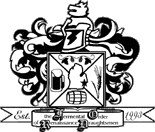
|

|

|

|

|

|
| November 2003 | Fermental Order of Renaissance Draughtsmen | Volume 11 Number 11 |
The next meeting will be held back at Bailey's Pub 'N Grille in Dearborn on Wednesday, November 12. Bailey's is located on the southeast corner of Michigan and Mason. Their address is 22091 Michigan Avenue and their phone number is 313-277-3212. As usual, the thirsty hardcore who want dinner will start arriving around 5PM, people will drift in for an hour or so, and we will start our meeting around 6PM.
Because of the short time between October's and November's meeting, we'll have to wait for the October Competition Results. September's Koelsch and Altbier competition was won by Bob Barrett.
This month's competition is Porter and Stout BJCP Categories 15 and 16.
15. PORTER
15A. Robust Porter
Aroma: Roast malt or grain aroma, often coffee-like or chocolate-like, should be evident. Hop aroma moderate to low. Fruity esters, and diacetyl, are moderate to none.
Appearance: Dark brown to black color, may be garnet-like. Clarity may be difficult to discern in such a dark beer. Head retention should be moderate to good.
Flavor: Malt flavor usually features coffee-like or chocolate-like roasty dryness. Overall flavor may finish from medium sweet to dry, depending on grist composition, hop bittering level, and attenuation. May have a sharp character from dark roasted grains. Hop flavor varies widely. Diacetyl moderate to none.
Mouthfeel: Medium to medium-full bodied. Low to moderate carbonation.
Overall Impression: A substantial dark ale with complex roasty malt, hop and fermentation characteristics.
History: Originating in England, Porter developed as a blend of beers or gyles known as "Entire." A precursor to stout. Said to have been favored by porters and other physical laborers.
Comments: Although a rather variable style, it may be distinguished from closely-related Stout as lacking the Stout's roasted barley character.
Ingredients: May contain several malts, prominently dark roasted malts and grains, which often include black malt. Hops are used for bittering, flavor and/or aroma. Water must have significant carbonate hardness. Ale yeast is most common.
Vital Statistics: OG: 1.050- 1.065
IBUs: 25-45 FG: 1.012-1.016
SRM: 30+ ABV: 4.8-6.0%
Commercial Examples: Sierra Nevada Porter, Anchor Porter, Great Lakes Edmund Fitzgerald Porter.
15B. Brown Porter
Aroma: Malt aroma with mild roastiness should be evident. Hop aroma may be moderate to low. Esters and diacetyl may be moderate to none.
Appearance: Medium brown to dark brown in color. Clarity and head retention should be fair to good.
Flavor: Malt flavor will include mild to moderate roastiness. Hop flavor low to none. Hop bittering will vary the balance from slightly malty to slightly bitter. Diacetyl, and sourness or sharpness from dark grains, should be low to none.
Mouthfeel: Medium-light to medium bodied. Low to moderate carbonation.
Overall Impression: A fairly substantial dark ale with some roasty characteristics.
History: Originating in England, porter evolved from a blend of beers or gyles known as "Entire." A precursor to stout. Said to have been favored by porters and other physical laborers.
Comments: Softer flavors, lower gravities, and usually less alcohol than robust porter. More substance and roast than brown ale. Some versions are fermented with lager yeast. Balance tends toward malt more than hops.
Ingredients: May contain several malts, including dark roasted malts and grains. Hops are used chiefly for bitterness. Water should have significant carbonate hardness. Ale yeast, or occasionally lager yeast, is used.
Vital Statistics: OG: 1.040-1.050
IBUs: 20-30 FG: 1.008-1.014
SRM: 20-35 ABV: 3.8-5.2%
Commercial Examples: Samuel Smith Taddy Porter, Bateman Salem Porter, Shepherd Neame Original Porter, Yuengling Porter, Fuller's London Porter.
16. STOUT
16A. Dry Stout
Aroma: Coffee-like roasted barley and roasted malt aromas are prominent. Esters low to medium. Diacetyl moderate to none. Hop aroma low to none.
Appearance: Deep garnet to black in color. Clarity is irrelevant in such a dark beer. A thick, creamy, long-lasting head is characteristic.
Flavor: Moderate acidity/sourness and sharpness from roasted grains, and medium to high hop bitterness, provide a dry finish. Balancing factors may include some creaminess, moderate to low fruitiness, and medium to no diacetyl.
Mouthfeel: Medium-light to medium body, with a creamy character. Low to moderate carbonation.
Overall Impression: A very dark, roasty, bitter, creamy ale.
History: The style evolved from attempts to capitalize on the success of London porters, but originally reflected a fuller, creamier, more "stout" body. Modern versions are brewed from a lower OG and no longer reflect a fuller body than porters.
Comments: This is the draught version of what is otherwise known as Irish stout. Bottled versions are typically brewed from a significantly higher OG and may be considered foreign extra stouts.
Ingredients: The dryness comes from the use of roasted unmalted barley in addition to pale malt, moderate to high hop bitterness, and good attenuation. Flaked unmalted barley may also be used to add a creaminess. A small percentage of soured beer is sometimes added for complexity. Water should have high carbonate hardness.
Vital Statistics: OG: 1.035-1.050
IBUs: 30-50 FG: 1.007-1.011
SRM: 35+ ABV: 3.2-5.5%
Commercial Examples: Guinness Draught Stout (also canned), Murphy's Stout, Beamish Stout.
16B. Sweet Stout
Aroma: Mild roasted grain aromas. Fruitiness can be low to high. Diacetyl medium to none. Hop aroma low to none.
Appearance: Very dark amber to black in color, which makes clarity essentially unimportant. Creamy head.
Flavor: Dark roasted grains and malts dominate the flavor as in dry stout, though there is medium to high sweetness. Hopping is moderate and tends to be lower than in dry stout, emphasizing the malt sweetness.
Mouthfeel: Full-bodied and creamy. Carbonation low to moderate.
Overall Impression: A very dark, sweet, full-bodied, slightly roasty ale.
History: An English style of stout.
Comments: Gravities are low in England, higher in the exported product.
Ingredients: Lactose is sometimes added to provide additional residual sweetness. High carbonate water is all but essential.
Vital Statistics: OG: 1.035-1.066
IBUs: 20-40 FG: 1.010-1.022
SRM: 35+ ABV: 3-5.6%
Commercial Examples: Mackeson's XXX Stout, Watney's Cream Stout, Samuel Adams Cream Stout, Tennent's Milk Stout.
16C. Oatmeal Stout
Aroma: Mild roasted grain aromas. Fruitiness should be low to medium. Diacetyl medium to none. Hop aroma low to none.
Appearance: Black in color. Thick creamy head. Dark color will likely obscure any clarity.
Flavor: Medium sweet to medium dry, with the complexity of dark roasted grains prominent. Medium hop bitterness with the balance toward malt. Diacetyl low to medium. May have a slight nuttiness.
Mouthfeel: Full bodied, smooth, silky, with an oily or even mealy texture from the oatmeal.
Overall Impression: A very dark, full-bodied, roasty, malty ale.
History: A variation of sweet stout that is usually less sweet than the original.
Comments: Between sweet and dry stouts in sweetness.
Ingredients: Pale, caramel and dark roasted malts and grains. Oatmeal used to enhance fullness of body and complexity of flavor. Hops for bitterness only. Ale yeast. Water source should have some carbonate hardness.
Vital Statistics: OG: 1.035-1.060
IBUs: 20-50 FG: 1.010-1.018
SRM: 35+ ABV: 3.3-6.0%
Commercial Examples: Samuel Smith Oatmeal Stout, Young's Oatmeal Stout, Brew Moon Eclipse.
16D. Foreign Extra Stout
Aroma: Roasted grain aromas prominent. Fruitiness medium to high. Diacetyl low to medium. Hop aroma low to none. Occasionally has the aroma of alcohol.
Appearance: Very deep brown to black in color. Clarity usually obscured by deep color.
Flavor: Can range from sweet to dry, with roasted grain character obvious but not sharp. Fruitiness can be low to high, diacetyl medium to none. Hop bitterness can be medium to high.
Mouthfeel: Medium full body, creamy character. May give a warming impression.
Overall Impression: A very dark, moderately sweet, strong, roasty ale.
History: Originally high-gravity stouts brewed for tropical markets. Some bottled export versions of dry or sweet stout may also fit this profile.
Comments: These beers possess a stronger alcohol content than other stouts except the Imperial Stout.
Ingredients: Pale and dark roasted malts and grains. Hops for bitterness. Ale yeast.
Vital Statistics: OG: 1.050-1.075
IBUs: 35-70 FG: 1.010-1.017
SRM: 35+ ABV: 5-7.5%
Commercial Examples: ABC Stout, Guinness Foreign Extra Stout (bottled).
As editor, I owe Al an apology. Al sent me some wonderful pictures from his recent vacation. However the story accompanying them was emailed to my work address. I forgot to email them home and when I did I messed up the email address (the perils of a new email account). The article and pictures will be in December's newsletter.

 |
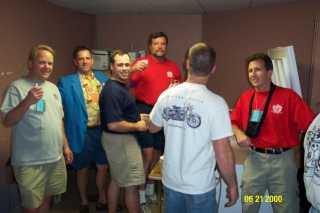 |
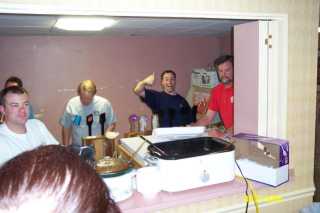 |
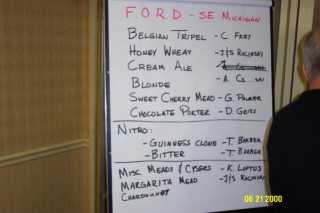 |
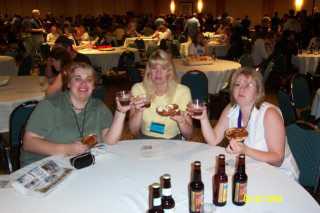 |
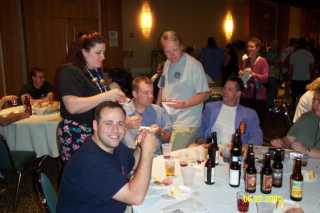 |
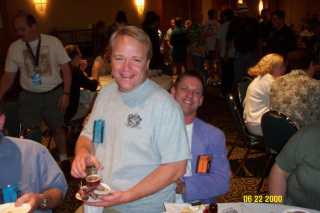 |
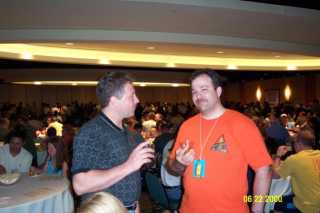 |
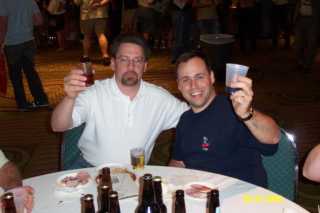 |
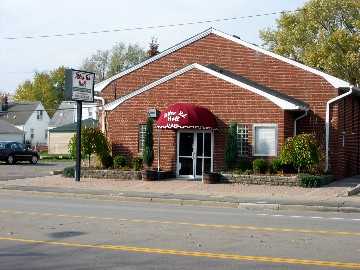 |
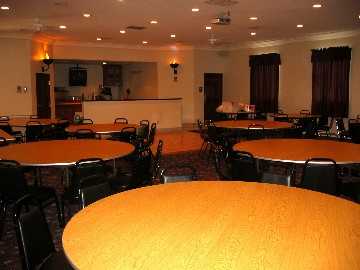 |
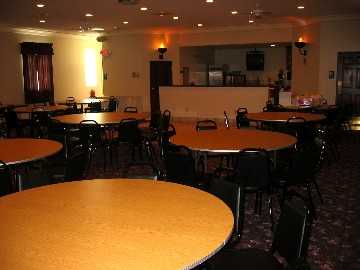 |
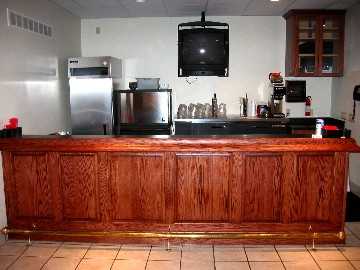 |
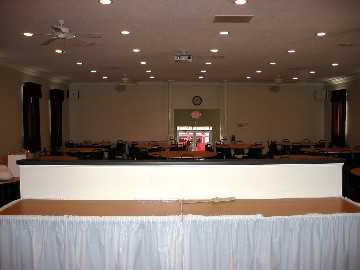 |
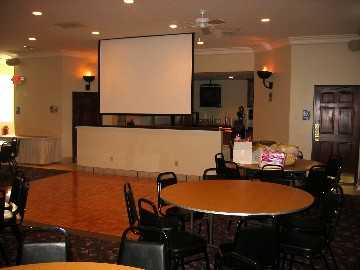 |
Next month's competition includes Holiday Ales, English, Scottish Strong
Ale, Barleywines and Imperial Stouts. This includes BJCP Categories 11 &
12. Please also bring your entries for January 2004, Competition Category
(AHA) - Barleywine - BJCP category 12.
Here are the BJCP guides for Categories 11 and 12.
11. ENGLISH AND SCOTTISH STRONG ALE
11A. Old Ale
Aroma: Malty, with complex fruity esters. Some oxidative notes are acceptable, akin to those found in port or sherry. Hop aromas not usually present, due to extended age.
Appearance: Medium amber to very dark red-amber color.
Flavor: Malty and usually sweet, with abundant fruity esters. The nutty malt sweetness yields to a finish that may vary from dry to somewhat sweet. Extended aging may contribute oxidative flavors similar to a fine old port or Madiera wine. Alcoholic strength should be evident, though not overwhelming.
Mouthfeel: Medium to full body; alcohol should contribute some warmth.
Overall Impression: An ale of significant alcoholic strength, though usually not as strong or rich as barleywine. Usually tilted toward a sweeter, more malty balance.
History/Comments: Often regarded as winter warmers, and often released as seasonal beers.
Ingredients: Generous quantities of well-modified pale malt (generally English in origin, though not necessarily so), along with judicious quantities of caramel malts. Some darker examples suggest that dark malts may be appropriate, though sparingly so as to avoid roast character. Adjuncts (such as molasses or dark sugar) may also be utilized. Hop variety is not as important, as the relative balance and aging process negate much of the varietal character.
Vital Statistics: OG: 1.060-1.090+
IBUs: 30-60 FG: 1.015-1.022+
SRM: 12-16 ABV: 6-9+%
Commercial Examples: Theakston Old Peculier, Young's Winter Warmer, Marston Owd Roger.
11B. Strong Scotch Ale (Wee Heavy)
Aroma: Deeply malty, with caramel apparent. Roasty or even smoky secondary aromas may also be present, adding complexity. Moderate diacetyl character is also acceptable.
Appearance: Dark amber to dark brown color, often with ruby highlights.
Flavor: Intensely malty with kettle caramelization apparent. Hint of roasted malt or smoky flavor may be present, as may some buttery diacetyl or nutty character. Hop flavors are low, so malt impression should be dominant.
Mouthfeel: Full-bodied, with a thick, chewy viscosity. Alcoholic warmth should also be present.
Overall Impression: Rich and malty, reminiscent of a dessert. Complex secondary malt flavors prevent a one-dimensional impression.
History/Comments: Fermented at cooler temperatures than most ales, and with lower hopping rates, resulting in clean, intense malt flavors. Well suited to the region of origin, with abundant malt and cool fermentation and aging temperature. Hops, which are not native to Scotland and formerly expensive to import, were kept to a minimum.
Ingredients: Well-modified pale malt, with some crystal and perhaps a dash of darker malt or even roasted barley. A small proportion of smoked malt may add depth, though smoky character may also originate from the yeast. Hop presence is minimal, although English varieties are most authentic. Low-to-medium sulfate and medium carbonate/bicarbonate water is most appropriate.
Vital Statistics: OG: 1.072-1.088+
IBUs: 20-40 FG: 1.019-1.025+
SRM: 10-47 ABV: 6.9-8.5+
Commercial Examples: Traquair House, MacAndrew's Scotch Ale, McEwan's Scotch Ale, Belhaven Wee Heavy, Scotch du Silly, Vermont Pub and Brewery Wee Heavy.
12. BARLEYWINE AND IMPERIAL STOUT
12A. English-style Barleywine
Aroma: Moderate to intense fruitiness; presence of hops (English varieties) may range from mild to assertive. A caramel-like aroma is often present.
Appearance: Color may range from rich gold to very dark amber or even brown. Often has ruby highlights. May have low head retention.
Flavor: Fruity, with a great intensity of malt. Hop bitterness may range from just enough for balance to a firm presence; balance therefore ranges from malty to bitter. Some oxidative flavors may be present, and alcohol should be evident.
Mouthfeel: Full-bodied, with a slick, viscous texture. Gentle smooth warmth from alcohol should be present.
Overall Impression: The richest and strongest of the English Ales.
History/Comments: Usually the strongest ale offered by a brewery, and often vintage-dated. Normally aged significantly prior to release. Often associated with the winter or holiday season. Although a hoppy beer, the English Barleywine places less emphasis on hop character than the American Barleywine and features English hops.
Ingredients: Well-modified pale malt should form the backbone of the grist, with judicious amounts of caramel malts. Dark malts should be used with great restraint, if at all, as most of the color arises from a lengthy boil. English hops such as Northdown, Target, East Kent Goldings and Fuggles.
Vital Statistics: OG: 1.080-1.120+
IBUs: 50-100 FG: 1.020-1.030+
SRM: 10-22 ABV: 8-12+%
Commercial Examples: Anchor Old Foghorn, Young's Old Nick, Fuller's Golden Pride.
12B. American-Style Barleywine
Aroma: Moderate to intense fruitiness; presence of hops (typical American varieties) may range from moderate to dominant. A caramel-like aroma is often present.
Appearance: Color may range from rich gold to very dark amber or even brown. Often has ruby highlights. May have low head retention.
Flavor: Fruity, with a great intensity of malt. Hop bitterness may range from just enough for balance to a firm, resiny dominance; balance therefore ranges from slightly malty to intensely bitter. Some oxidative flavors maybe present, and alcohol should be evident.
Mouthfeel: Full-bodied, with a slick, viscous texture. Gentle smooth warmth from alcohol should be present.
Overall Impression: A well-hopped American interpretation of the richest and strongest of the English ales.
History/Comments: Usually the strongest ale offered by a brewery, and often vintage-dated. Normally aged significantly prior to release. Often associated with the winter or holiday season. The American version of the Barleywine tends to have a greater emphasis on hop bitterness, flavor and aroma than the English Barleywine, featuring American hop varieties.
Ingredients: Well-modified pale malt should form the backbone of the grist, with judicious amounts of caramel malts. Dark malts should be used with great restraint, if at all, as most of the color arises from a lengthy boil. American hops such as Cascades and Centennial.
Vital Statistics: OG: 1.080-1.120+
IBUs: 50-100 FG: 1.020-1.030+
SRM: 10-22 ABV: 8-12+%
Commercial Examples: Sierra Nevada Bigfoot, Rogue Old Crustacean, Victory Old Horizontal.
12C. Russian Imperial Stout
Aroma: Fruity esters, reminiscent of dark fruit, merged with intense roastiness and maltiness. Hop aroma is usually also present.
Appearance: Very dark reddish-black color; opaque.
Flavor: Intensely fruity and malty, backed up by balancing roastiness and prominent hop bitterness and flavor. A "burnt currant" character may be present, along with a suggestion of cocoa or strong coffee. Alcoholic strength should be evident, along with a deep, complex malt flavor. The finish can vary from relatively dry to moderately sweet, usually with some lingering roastiness and warming character.
Mouthfeel: Very full-bodied and rich, with intense flavors and perceptible alcohol presence. Carbonation is relatively low.
Overall Impression: An intensely flavorful beer. Roasty, fruity, and bittersweet, with a notable alcohol presence. Dark fruit melds with roasty, burnt, almost tar-like sensations.
History: Said to be popular with the Russian Imperial Court.
Comments: Brewed to high gravity and hopping level in England for export to the Baltic States and Russia.
Ingredients: Well-modified pale malt, with generous quantities of roasted grain. Flavor and aroma hops should include English varieties for authenticity. Alkaline water would balance the abundance of acidic roasted grain in the grist.
Vital Statistics: OG: 1.075-1.095+
IBUs: 50-90+ FG: 1.018-1.030+
SRM: 20-40 ABV: 8-12+%
Commercial Examples: Samuel Smith Imperial Stout, Courage Imperial Stout, Brooklyn Black Chocolate Stout, Rogue Imperial Stout, North Coast Old Rasputin Imperial Stout, Victory Storm King.
This is from the minutes of the October 1998 Meeting. The secretary was Chris Frey
Our last meeting was held at our relatively new hangout, Sisko's. Sisko's has been very accommodating to our club and it looks like we could be settling in there for the winter.
Richard began the meeting with a re-cap of candidates for election. Similar to politics in the old USSR, it appears that there is only one candidate for each office. People are free to vote for whomever they like, dissidents will be shot. Seriously, Jim Racine is running for Vice President, Mike Arend is seeking the Librarian position (would that be..nah, don't go there), Rich Byrnes will accept the Secretary slot, I coughed up for Treasurer. We did have a volunteer to be President, but Mr. Cord later discovered that his course schedule will directly conflict with the meeting schedule and had to defer.
So, while we have most of the positions taken, the singularly most important one is vacant. I will assume that Rich will make mention of this fact elsewhere in the newsletter, we really must have a leader. The club has had a good 5 year run with Neal and Rich, but it is time for some new blood. There are really only two requirements for this position: 1. You must be a carbon-based life form, and 2. You must be a Ford employee. Obviously, we would like to see someone with a good energy level, semi-organized sort that can remember to call Sisko's a week ahead of time to remind them of our impending presence in their establishment, someone who can handle minor FERA duties and attend occasional dinners with the FERA council, someone who can organize and delegate a couple of bitching activities each year and of course, someone who really cares about what happens with the club. But hey, we'll take the carbon-based life form.
The election will be at the next meeting (which will be a week early due to the holiday schedule, ditto for Christmas), which will be November 18th at Sisko's. If there is just one candidate per position, this formality will take all of about two beer swallows.
Rich indicated that he is caught up printing out new id cards, so ask him for your's if you haven't gotten it yet.
Jim Rice has been handling the competitions as of late and he caught up with some older winners by distributing the ribbons from several months ago. After we enjoyed his "Tyler Barber Appreciation Show" ;-) (did you know that Tyler won the AHA National Stout category?), Jim indicated that everyone is welcome to judge. The upcoming competitions are published later in this newsletter.
That's all that I remember from the "official" part of the meeting. I brought along several second round Michigan State Fair entries for people to enjoy, spit out or whatever. By the way, check out the dinner specials while you're there. I had the BLT roll-ups and for $3.95, it was a decent meal. See ya next week!
| Beer Events, Meetings & Competitions | 
|
| Ye Olde Brew News
published by the F.O.R.D. Homebrew Club |
|
| Editor: Tony Tantillo Contributors: Club Officers: |
F.O.R.D. is a private, non-profit organization of homebrewers.
The main goal of this club is to promote awareness and appreciation of
the quality and variety of beer; to share information regarding technique,
equipment and skill required to brew quality homemade beer; and to encourage
responsible use of beer as an alcohol-containing beverage. Howard Klix Jr. 24737 Cushing Ave Eastpointe, MI 48021 Phone: (586) 779-1445 Visit our website at: http://www.be.ford.com/brewers/
current circulation... 125 |